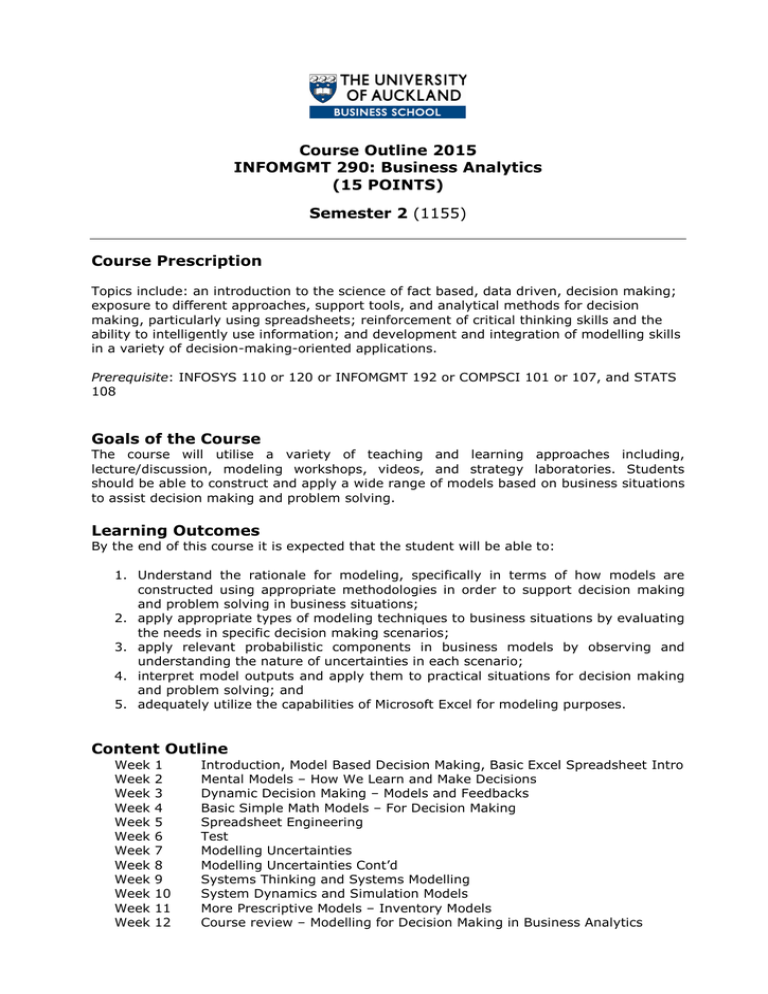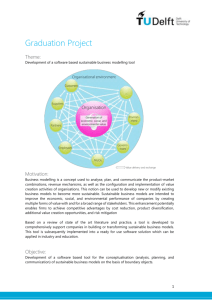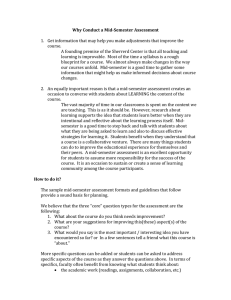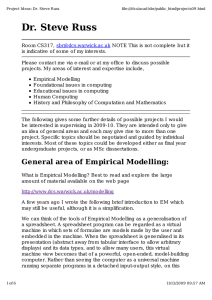Course Outline 2015 INFOMGMT 290: Business Analytics (15 POINTS) Semester 2
advertisement

Course Outline 2015 INFOMGMT 290: Business Analytics (15 POINTS) Semester 2 (1155) Course Prescription Topics include: an introduction to the science of fact based, data driven, decision making; exposure to different approaches, support tools, and analytical methods for decision making, particularly using spreadsheets; reinforcement of critical thinking skills and the ability to intelligently use information; and development and integration of modelling skills in a variety of decision-making-oriented applications. Prerequisite: INFOSYS 110 or 120 or INFOMGMT 192 or COMPSCI 101 or 107, and STATS 108 Goals of the Course The course will utilise a variety of teaching and learning approaches including, lecture/discussion, modeling workshops, videos, and strategy laboratories. Students should be able to construct and apply a wide range of models based on business situations to assist decision making and problem solving. Learning Outcomes By the end of this course it is expected that the student will be able to: 1. Understand the rationale for modeling, specifically in terms of how models are constructed using appropriate methodologies in order to support decision making and problem solving in business situations; 2. apply appropriate types of modeling techniques to business situations by evaluating the needs in specific decision making scenarios; 3. apply relevant probabilistic components in business models by observing and understanding the nature of uncertainties in each scenario; 4. interpret model outputs and apply them to practical situations for decision making and problem solving; and 5. adequately utilize the capabilities of Microsoft Excel for modeling purposes. Content Outline Week Week Week Week Week Week Week Week Week Week Week Week 1 2 3 4 5 6 7 8 9 10 11 12 Introduction, Model Based Decision Making, Basic Excel Spreadsheet Intro Mental Models – How We Learn and Make Decisions Dynamic Decision Making – Models and Feedbacks Basic Simple Math Models – For Decision Making Spreadsheet Engineering Test Modelling Uncertainties Modelling Uncertainties Cont’d Systems Thinking and Systems Modelling System Dynamics and Simulation Models More Prescriptive Models – Inventory Models Course review – Modelling for Decision Making in Business Analytics Learning and Teaching Classes will be held at the City campus. A variety of instructional methods will be employed, including lectures, computer labs, videos, and case studies. To make the class more lively and valuable for everyone, all students are expected to have read and contemplated on the material assigned for each day. The procedures and the course schedule are subject to change though all effort has been taken to plan lectures according to the schedule given. In the spirit of continuous improvement, feedback and ideas on this course are welcome. The expectation is that students spend an average of 7-9 hours per week on the course outside of class (approximately evenly split between reading/studying and assignments). Teaching Staff Dr. Anson Li Office: OGGB 410 Tel: 373-7599 (ext 83730) Email: akt.li@auckland.ac.nz Learning Resources Study notes will be provided for class sessions. Assessment Individual Assignment Mid-semester Test Exam Total 30% 25% 45% 100% Each student will undertake one individual assignment. Assignments are to be submitted electronically before 4pm on the due date. Late assignments will receive a 10% penalty per (part or full) day late. Please note the material in the Student Handbook regarding Cheating and Plagiarism. A 50-minute mid-semester test (worth 25% of the course grade) will be held during class. Time and venue to be confirmed. A 3-hour closed-book Final Examination (worth 45% of the course grade) will be conducted during exam week (date and time TBA). The exam will emphasise an integration of the concepts discussed in the course. Note: Examinable material may include course notes and readings (including case studies) and class discussion. To gain a pass for this course, students are required to achieve a mark of: 1. 50% or greater in the aggregate for the course; 2. 50% or greater in either the final exam or the combined totals of the mid-semester test and the final exam. Learning Outcome 1 2 3 4 5 Assignment X X X X X Test X X X Final Exam X X X X X Learning outcomes are listed in the sequence in which they will be achieved; their relationship to the various pieces of assessment manifests accordingly. The assessments will strongly emphasize students’ ability to apply theory in lifelike/real-life scenarios as opposed to regurgitating theory in response to questions that test their rote learning.







